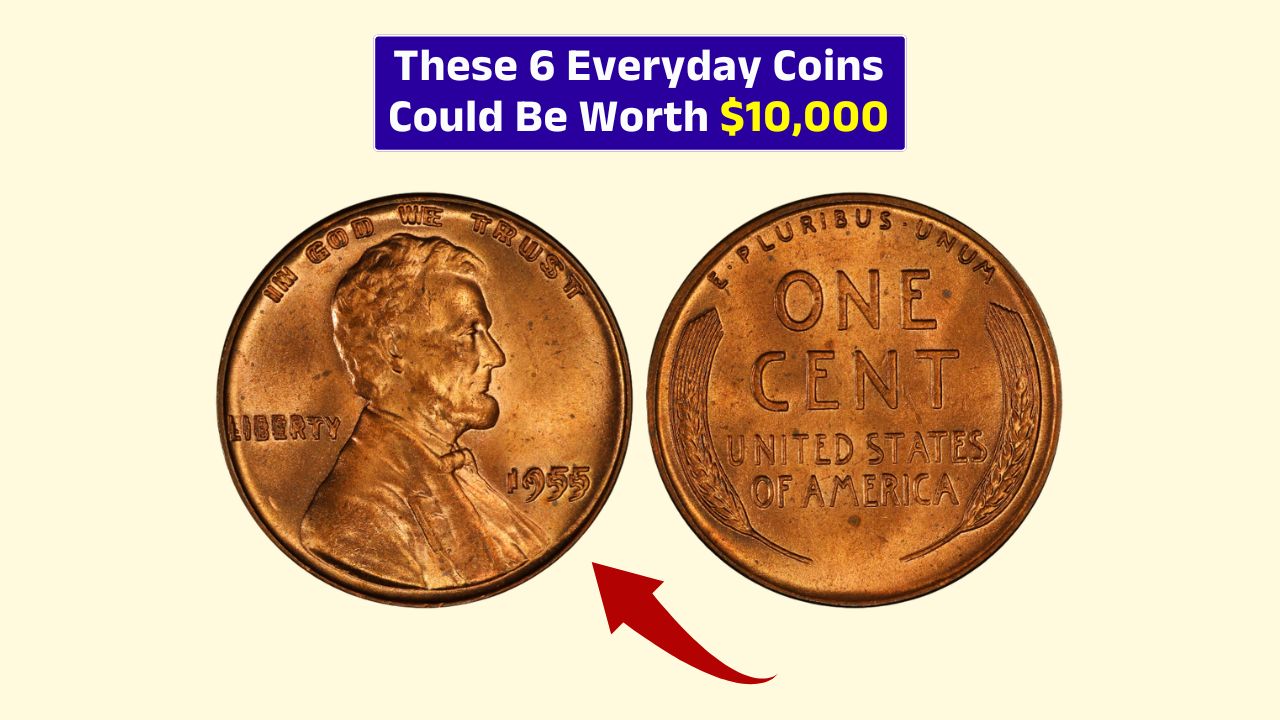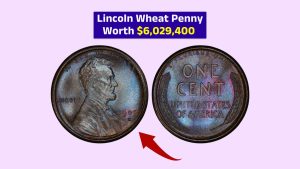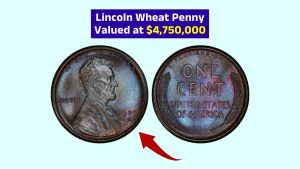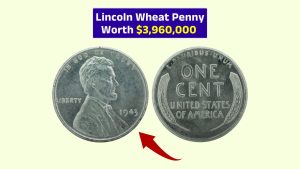Have you ever looked at an old penny and thought, could this be worth something? You’re not alone. Coin collecting isn’t just a nerdy pastime; it’s like a treasure hunt hiding in your kitchen drawer. Some pennies are so rare that they’re worth thousands.
Let’s take a look at six rare coins that could be worth over $10,000 each—and yes, they might be sitting in your pocket right now.
1943 Copper Lincoln Wheat Penny
The 1943 Copper Lincoln Wheat Penny is one of the most famous error coins in U.S. history. During World War II, the U.S. Mint used steel instead of copper to conserve materials for the war.
But a few copper blanks were accidentally used. If you’ve got a 1943 penny and it doesn’t stick to a magnet, you could be holding one of these rare mistakes. Depending on the condition, it could fetch anywhere from $10,000 to over $100,000.
1955 Doubled Die Lincoln Cent
The 1955 Doubled Die Lincoln Cent is a coin with a unique visual flaw—obvious doubling on the words “IN GOD WE TRUST” and “LIBERTY.” This minting mistake makes it one of the most well-known error coins among collectors.
Circulated examples usually sell for about $1,000, while uncirculated versions can bring in more than $10,000.
Doubled Die Reverse
In 1983, the U.S. Mint produced some pennies with a reverse doubling error. The 1983 Doubled Die Reverse Penny shows noticeable doubling in the text “ONE CENT” and “UNITED STATES OF AMERICA.” Authentic versions of this coin weigh around 2.5 grams.
If you have one in near-mint condition, it could be worth as much as $15,000.
1969-S Doubled Die Lincoln Cent
The 1969-S Doubled Die Lincoln Cent is another sought-after error coin. It features dramatic doubling on the front, especially in “IN GOD WE TRUST” and “LIBERTY.”
It also has the “S” mint mark from San Francisco. This coin is extremely rare, and high-grade examples have sold for between $10,000 and $70,000.
1972 Doubled Die Lincoln Cent
The 1972 Doubled Die Lincoln Cent shows bold doubling on the obverse. The words “LIBERTY” and “IN GOD WE TRUST” appear almost shadowed because of the doubling.
Circulated versions might be worth a few hundred dollars, but uncirculated coins in great condition can sell for over $10,000.
1982-D Small Date Copper
In 1982, the U.S. Mint switched from copper to zinc for pennies. But a few 1982-D Small Date Copper Pennies slipped through. To check if yours is one, look for the small date design and weigh the coin.
A genuine copper version will weigh around 3.1 grams. These rare transitional coins can bring in $10,000 or more if they’re in high-grade condition.
| Coin | Year | Type | Potential Value |
|---|---|---|---|
| Copper Wheat Penny | 1943 | Error – Copper Mint | $10,000 to $100,000+ |
| Doubled Die Lincoln Cent | 1955 | Obverse Doubling | $1,000 to $10,000+ |
| Doubled Die Reverse Penny | 1983 | Reverse Doubling | Up to $15,000 |
| Doubled Die Lincoln Cent | 1969-S | Obverse Doubling | $10,000 to $70,000 |
| Doubled Die Lincoln Cent | 1972 | Obverse Doubling | Over $10,000 |
| Small Date Copper Penny | 1982-D | Copper Transitional | $10,000+ |
If you’ve got a jar of old pennies stashed away somewhere, it’s time to give them a second look. These coins might look ordinary, but their value is anything but.
With just a magnet, a scale, and a sharp eye, you could find yourself holding a five-figure collectible without even knowing it.
FAQs
How do I test a 1943 penny?
Use a magnet. If it doesn’t stick, it could be copper.
What is a doubled die penny?
It’s a coin with visible doubling from a minting error.
How much is a 1983 doubled die worth?
Near-mint versions can sell for up to $15,000.
What’s special about the 1982-D penny?
Some were made of copper by mistake during a transition year.
Can I sell rare pennies online?
Yes, use auction sites or coin dealers to get top dollar.



